Top 10 Altcoins with High Growth Potential in 2024
Category: Cryptocurrency
Discover the Top Altcoins Primed for Explosive Growth
If you're a cryptocurrency enthusiast or investor looking beyond Bitcoin, finding altcoins with high growth potential can be both exciting and challenging. Whether you're a seasoned trader or just starting your crypto journey, identifying the next big altcoins involves careful analysis of technology, market trends, use cases, and community support. This post aims to guide you through the top 10 altcoins in 2024 that are poised for significant growth, factoring in their innovation, adoption, and speculative potential. Unlike generic lists, we dive deep into each altcoin’s fundamentals and growth catalysts to help you make informed decisions. If you've landed here searching for promising alternatives to Bitcoin or want to diversify your portfolio with informed choices, this article is tailored just for you. Keep reading to explore projects that might redefine the crypto landscape and maximize your investment's upside with clear, insightful guidance.
- Discover the Top Altcoins Primed for Explosive Growth
- Understanding Altcoins and Their Growth Potential
- Criteria for Selecting Top Altcoins with High Growth Potential in 2024
- Ethereum (ETH) – The Leader in Smart Contracts and DeFi
- Solana (SOL) – High-Speed Blockchain with Scalability Focus
- Polkadot (DOT) – Interoperability and Cross-Chain Growth
- Avalanche (AVAX) – Fast, Low-Cost Smart Contract Platform
- Cardano (ADA) – Sustainable and Peer-Reviewed Blockchain
- Chainlink (LINK) – Leading Decentralized Oracle Network
- Terra Classic (LUNC) and Terra 2.0 (LUNA) – Rebuilding and Potential Resurgence
- Emerging Altcoins to Watch in 2024 – Promising Newcomers with Innovative Use Cases
- Risks and Considerations When Investing in High-Growth Altcoins
Understanding Altcoins and Their Growth Potential
Altcoins, short for alternative coins, refer to any cryptocurrency other than Bitcoin. While Bitcoin remains the pioneer and largest digital asset by market cap, altcoins have carved their niche by offering innovative technologies, unique use cases, and different economic models. These coins range from well-known projects like Ethereum and Cardano to newer entrants leveraging advances in decentralized finance (DeFi), non-fungible tokens (NFTs), and blockchain scalability.
Several key factors drive an altcoin’s growth potential:
- Technological Innovation: Altcoins that introduce breakthroughs—such as faster transaction speeds, improved scalability, or enhanced privacy—often attract developer interest and user adoption.
- Real-World Use Cases: Projects providing practical applications, like smart contracts, decentralized applications (dApps), or blockchain interoperability, tend to sustain long-term growth.
- Community and Ecosystem Support: A strong, active community and developer ecosystem can propel adoption and continuous improvement, crucial for an altcoin’s success.
- Market Trends and Speculation: Investor sentiment, media coverage, and broader crypto market cycles heavily influence altcoin performance.
- Tokenomics and Governance: Well-designed supply mechanisms, staking rewards, and transparent governance models can enhance investor confidence and token utility.
Not all altcoins are created equal—those that blend cutting-edge technology with real adoption and solid community backing tend to outperform the crowd. In this post, we focus on such altcoins, identifying the projects with foundational strength and momentum that position them for explosive growth in 2024 and beyond. Understanding these dynamics helps you spot promising opportunities amidst the thousands of altcoins available today.
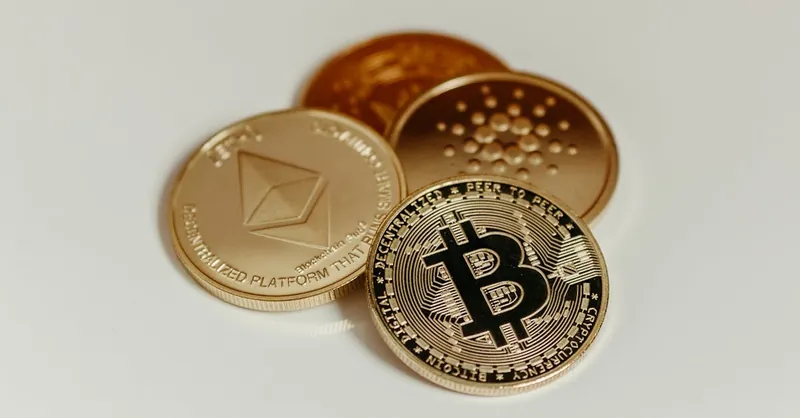
Image courtesy of Jonathan Borba
Criteria for Selecting Top Altcoins with High Growth Potential in 2024
Identifying altcoins with genuine growth potential requires a comprehensive evaluation framework that goes beyond hype and price fluctuations. For 2024, successful altcoin investments hinge on a blend of solid fundamentals, innovation, and market dynamics. Here are the essential criteria we use to select top altcoins poised for explosive growth:
-
Technology and Innovation
At the core, an altcoin must offer cutting-edge technology that addresses blockchain limitations like scalability, speed, or interoperability. Innovations such as layer-2 solutions, zero-knowledge proofs, or novel consensus mechanisms significantly enhance an altcoin’s competitive edge and long-term viability. -
Experienced and Transparent Team
The credibility of the development team and advisors is crucial. Projects led by seasoned blockchain experts with clear roadmaps and transparent communication channels tend to build greater investor trust and sustainable ecosystems. -
Market Capitalization and Liquidity
While small market cap altcoins can yield high returns, liquidity is key to ease of trading and price stability. We prioritize coins with healthy market caps and sufficient trading volume on reputable exchanges to balance growth potential with manageable risk. -
Real-World Use Cases and Adoption
Altcoins that solve tangible problems or enable new business models—whether through DeFi platforms, NFT marketplaces, or decentralized identity solutions—show stronger potential for mass adoption. Practical utility is a major growth driver beyond speculative interest. -
Community Engagement and Ecosystem Development
A vibrant, engaged community fuels adoption and innovation. We assess the size, activity, and passion of developer networks and user communities on social platforms, GitHub, and project forums. Active participation often correlates with ongoing improvements and ecosystem expansion. -
Tokenomics and Governance Structure
Sustainable token economies incentivize holders and participants effectively. Key factors include deflationary mechanisms, staking rewards, governance voting rights, and transparency around token distribution and emission schedules, all of which influence investor confidence and long-term price appreciation.
By applying this rigorous, multi-faceted analysis, we filter out fleeting trends to spotlight altcoins with the greatest potential for meaningful growth in 2024. This approach ensures that our top 10 picks are backed by strong fundamentals, innovative tech, and thriving communities—positioned to capitalize on the evolving crypto landscape.
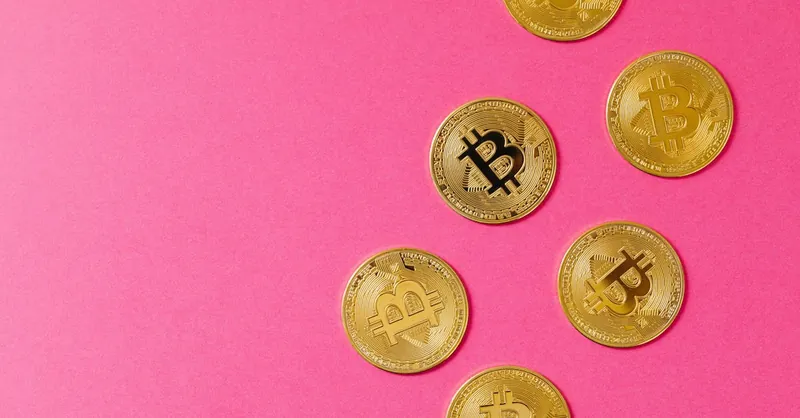
Image courtesy of Photo By: Kaboompics.com
Ethereum (ETH) – The Leader in Smart Contracts and DeFi
Ethereum remains the undisputed leader in the smart contracts space and the powerhouse behind the booming decentralized finance (DeFi) ecosystem. Since its inception, Ethereum has pioneered programmable blockchain technology, enabling developers to build dApps (decentralized applications) that power everything from automated lending protocols and decentralized exchanges to NFTs and gaming platforms. This broad use case adoption underpins Ethereum’s long-term growth potential, making it a staple in any high-potential altcoin portfolio.
Why Ethereum Continues to Dominate in 2024
-
The Ethereum 2.0 Upgrade
The transition to Ethereum 2.0 (also known as the Consensus Layer), with its shift from Proof-of-Work (PoW) to Proof-of-Stake (PoS), is a game-changer. This upgrade enhances network scalability, security, and energy efficiency—addressing past criticisms about high gas fees and environmental impact. By vastly improving transaction throughput and reducing costs, Ethereum 2.0 is poised to sustain massive growth in user adoption and developer activity. -
Expanding Ecosystem and DeFi Leadership
Ethereum hosts the largest, most vibrant ecosystem of DeFi projects, including well-known platforms like Uniswap, Aave, and MakerDAO. This ecosystem continues to expand rapidly, onboarding new users and capital flow as decentralized applications reshape traditional finance. Moreover, Ethereum’s dominance in NFTs and layer-2 scaling solutions further cements its position as an indispensable blockchain. -
Robust Developer Community and Institutional Support
The Ethereum developer community is the largest in crypto, constantly innovating and improving the protocol. Strong institutional interest, including major enterprises adopting Ethereum-based solutions and growing DeFi integration, enhances legitimacy and fuels adoption momentum.
Key Growth Catalysts for Ethereum
- Layer-2 Solutions: Technologies like Optimism and Arbitrum drastically reduce transaction costs and increase speed, creating a more user-friendly experience.
- Sharding: Planned to increase scalability by splitting the blockchain into smaller pieces, allowing parallel transaction processing.
- EIP-1559 and Deflationary Dynamics: Ethereum’s upgraded fee-burning mechanism decreases circulating supply, potentially increasing ETH’s value over time.
Given these foundational upgrades and Ethereum’s entrenched position at the heart of smart contracts and DeFi innovation, it remains a top contender for explosive growth in 2024 and beyond. Investors looking for exposure to real-world blockchain utility and a versatile development platform should consider Ethereum a core holding in their altcoin portfolio.

Image courtesy of Jonathan Borba
Solana (SOL) – High-Speed Blockchain with Scalability Focus
Solana has emerged as one of the most promising altcoins in 2024, distinguished by its high-throughput, low-latency blockchain architecture designed to tackle the scalability bottlenecks faced by many earlier blockchains. Built to handle thousands of transactions per second (TPS) with minimal fees, Solana is rapidly becoming a go-to platform for decentralized applications (dApps), decentralized finance (DeFi), and non-fungible tokens (NFTs). Its unique consensus mechanism, Proof of History (PoH) combined with Proof of Stake (PoS), ensures speedy confirmation times and robust network security, making it a preferred choice for developers seeking both performance and scalability.
Technology Strengths Driving Solana’s Growth
-
Unmatched Transaction Speeds and Low Fees
Solana delivers transaction speeds up to 65,000 TPS, dwarfing Ethereum and many other competitors. Along with transaction times averaging 400 milliseconds and fees often less than $0.01, Solana provides an efficient infrastructure for high-volume dApps and mass user adoption. -
Innovative Consensus Mechanism – Proof of History (PoH)
PoH creates a cryptographic timestamp that orders transactions before they reach consensus, drastically reducing the processing time. This novel approach removes latency delays typical in conventional Proof of Stake networks, boosting overall throughput without sacrificing decentralization or security. -
Growing Ecosystem of DeFi and NFTs
Solana’s scalability and low-cost environment have made it fertile ground for an expanding range of DeFi protocols, including lending platforms, automated market makers (AMMs), and synthetic asset projects. Additionally, Solana has seen explosive growth in its NFT marketplaces, attracting creators and collectors drawn to fast, affordable minting and trading experiences.
Recent Developments and Market Impact
- Solana’s ecosystem growth is supported by increasing partnerships with major crypto projects and institutional investors, fueling further development and liquidity.
- The introduction of Solana Pay, a decentralized payments protocol, is enhancing real-world use cases, bridging crypto acceptance with everyday commerce.
- With continuous updates to improve network stability and plans to boost cross-chain interoperability, Solana is positioning itself as a layer-1 solution equipped for sustained growth amid rising demand for scalable blockchain infrastructure.
Given its solid technology foundation, increasing ecosystem adoption, and substantial role in both DeFi and NFTs, Solana stands out as a prime altcoin with significant growth potential in 2024. Investors seeking exposure to high-speed, scalable blockchain platforms with real-world applicability should closely watch SOL as part of a diversified crypto portfolio.

Image courtesy of Markus Winkler
Polkadot (DOT) – Interoperability and Cross-Chain Growth
Polkadot has rapidly gained recognition as a groundbreaking altcoin project centered on blockchain interoperability and scalability. Unlike traditional blockchains that operate in isolation, Polkadot’s innovative architecture enables multiple specialized blockchains, known as parachains, to connect seamlessly within a unified network. This unique parachain model facilitates cross-chain communication, allowing assets and data to transfer securely between different blockchains, significantly enhancing the flexibility and efficiency of decentralized applications (dApps).
Why Polkadot Stands Out in 2024
-
Parachain Model for Scalable and Modular Blockchain Networks
At the heart of Polkadot’s design is the Relay Chain, which coordinates consensus and security for independent parachains. This modular approach enables developers to deploy customized blockchains optimized for specific use cases without sacrificing security or network interoperability. The parachain auctions system ensures that promising projects gain access to shared network resources, fostering a diverse and rapidly growing ecosystem. -
Growing Ecosystem Benefits and Developer Adoption
Polkadot supports a wide range of applications spanning DeFi, NFTs, gaming, and enterprise solutions, with an emphasis on interoperable protocols that can leverage data and assets across multiple chains. This cross-chain capability addresses one of crypto’s biggest challenges—isolated silos of liquidity and information—and catalyzes innovation by enabling dApps to interact fluidly across networks. -
Strong Governance and Upgradability
Polkadot features an on-chain governance model where DOT token holders vote on protocol upgrades, ensuring the network can evolve dynamically in response to community needs and technological advancements. This decentralized governance framework increases investor confidence and encourages sustained ecosystem participation.
Key Growth Drivers for Polkadot
- Cross-Chain DeFi and Bridging Solutions: Expanding projects leveraging Polkadot’s interoperability to create unified DeFi experiences across multiple blockchains.
- Parachain Slot Auctions: Attracting high-quality projects and enriching the network’s utility and token demand.
- Integration with Major Blockchains: Increasing collaborations with Ethereum, Bitcoin, and other networks to enhance liquidity and user adoption.
With its pioneering approach to blockchain interoperability via parachains, Polkadot is positioned to be a major catalyst for cross-chain innovation and scalability in 2024. For investors seeking altcoins that enable next-generation decentralized ecosystems with seamless network synergy, DOT offers compelling growth potential grounded in robust technology and an expanding community.
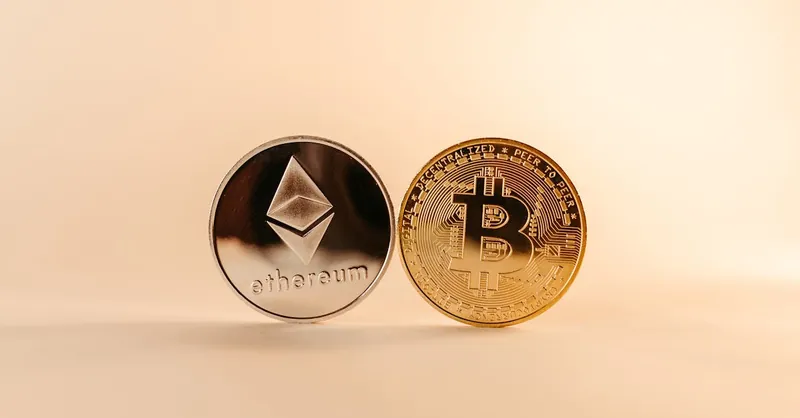
Image courtesy of Jonathan Borba
Avalanche (AVAX) – Fast, Low-Cost Smart Contract Platform
Avalanche (AVAX) is rapidly gaining traction as a high-performance blockchain platform designed to address the limitations of older networks by offering ultra-fast transaction speeds, low fees, and scalable infrastructure. Built with a novel consensus protocol, Avalanche ensures near-instant finality—transactions are confirmed within seconds—while maintaining decentralization and security, making it an attractive alternative for decentralized applications (dApps), DeFi projects, and enterprise use cases.
Key Technical Features Driving Avalanche’s Growth
-
Avalanche Consensus Protocol
Unlike traditional Proof-of-Work or standard Proof-of-Stake mechanisms, Avalanche employs a unique Directed Acyclic Graph (DAG)-based consensus, allowing thousands of validators to process transactions simultaneously. This architecture supports high throughput (up to 4,500 TPS) and produces transaction finality in under two seconds, significantly outperforming many competitors in speed and cost-efficiency. -
Subnet and Custom Blockchain Creation
Avalanche enables developers to launch customized interoperable blockchains called Subnets, which can be tailored with specific rules, economies, and compliance requirements. This flexibility attracts enterprise clients and large-scale projects seeking bespoke blockchain solutions within the Avalanche ecosystem. -
Compatibility with Ethereum
Avalanche supports the Ethereum Virtual Machine (EVM), enabling seamless deployment and porting of Ethereum-based dApps with much faster confirmation times and drastically lower fees. This EVM compatibility has driven a surge in DeFi protocols and NFT projects migrating or launching on Avalanche, expanding its user base and network effects.
Strategic Partnerships Fueling Ecosystem Expansion
Avalanche’s growth trajectory is further propelled by strategic collaborations with top-tier projects and institutions:
- Integration with Chainlink, providing decentralized oracles to enhance smart contract reliability and use cases in DeFi.
- Partnerships with platforms like Aave and Curve Finance, facilitating the expansion of liquidity pools and lending markets on Avalanche.
- Collaborations with enterprise and government initiatives leveraging Avalanche’s customizable blockchains for secure, scalable solutions.
Together, Avalanche’s cutting-edge technology and robust partnership network position AVAX as one of the top altcoins with significant growth potential in 2024. Its speed, low cost, and flexibility uniquely address critical blockchain scalability issues, empowering developers and enterprises to build next-generation decentralized applications with improved user experiences.

Image courtesy of Jonathan Borba
Cardano (ADA) – Sustainable and Peer-Reviewed Blockchain
Cardano stands out in the crowded altcoin landscape thanks to its academic, research-driven development process and commitment to sustainability. Unlike many blockchain projects that prioritize rapid deployment, Cardano’s methodology emphasizes peer-reviewed scientific research and formal methods, ensuring that every upgrade and feature is rigorously vetted for security, scalability, and long-term viability. This unique foundation has earned Cardano a reputation as one of the most robust and reliable blockchain platforms available today.
Research-Based Innovation and Recent Upgrades
-
Ouroboros Proof-of-Stake Consensus:
Cardano’s consensus algorithm, Ouroboros, is the first provably secure PoS protocol with formal verification backed by peer-reviewed research. This design provides energy-efficient blockchain security and decentralization without compromising performance or scalability, positioning ADA as a sustainable alternative to energy-intensive networks. -
Multi-Asset Ledger and Smart Contracts:
With the successful rollout of the Alonzo upgrade, Cardano introduced native support for smart contracts, unlocking DeFi and dApp capabilities previously reserved for Ethereum and similar platforms. Its multi-asset ledger allows users to issue custom tokens with the same security and accounting standards as ADA, enabling flexible and scalable decentralized finance ecosystems. -
Hydra Layer-2 Scaling Solution:
To address scalability challenges, Cardano has developed Hydra, a layer-2 protocol designed to increase transaction throughput dramatically while minimizing latency. Hydra’s architecture allows multiple heads (off-chain channels) that can process transactions in parallel, aiming to scale Cardano to millions of TPS, crucial for mass adoption.
Why Cardano’s Sustainable Approach Matters in 2024
- Energy Efficiency: Cardano’s low-energy PoS model appeals to investors and developers prioritizing environmental sustainability as blockchain scrutiny intensifies globally.
- Formal Governance with Project Catalyst: Cardano’s on-chain governance initiative, Project Catalyst, empowers ADA holders to propose and vote on ecosystem improvements, fostering community-driven innovation and sustainable growth.
- Growing Ecosystem and Partnerships: Continued collaborations with governments, educational institutions, and enterprises worldwide enhance Cardano’s real-world use cases in identity management, supply chain, and decentralized finance—strengthening ADA’s utility and long-term value.
Cardano’s dedication to scientific rigor, scalability, and sustainability marks it as a top altcoin with significant growth potential in 2024 and beyond. For investors interested in a blockchain platform that combines cutting-edge technology with responsible development practices, ADA remains a compelling choice.

Image courtesy of Pixabay
Chainlink (LINK) – Leading Decentralized Oracle Network
Chainlink (LINK) plays a crucial role in blockchain ecosystems by acting as a decentralized oracle network, bridging the gap between on-chain smart contracts and real-world data. In the rapidly expanding DeFi landscape, where autonomous contracts execute financial agreements, reliable access to off-chain information—such as price feeds, weather conditions, or sports results—is indispensable. Chainlink ensures this data is fetched securely, verifiably, and without reliance on centralized intermediaries, which significantly enhances trust and functionality across DeFi applications.
Why Chainlink is Essential for DeFi Expansion
-
Decentralized and Tamper-Proof Data Feeds
Chainlink’s network of numerous independent oracles prevents manipulation or single points of failure, guaranteeing accurate, real-time data delivery to smart contracts. This robustness is vital for DeFi protocols where erroneous data can lead to substantial financial losses or system vulnerabilities. -
Versatile Use Cases Beyond Price Feeds
While Chainlink initially gained traction for providing high-quality crypto asset price feeds, its capabilities extend across various sectors, including insurance claims, gaming, supply chain, and NFTs. This versatility widens Chainlink’s adoption potential and entrenches LINK as a foundational infrastructure token. -
Integration with Leading Blockchain Platforms
Chainlink’s compatibility spans major blockchains like Ethereum, Binance Smart Chain, Avalanche, and Polkadot, making it a key interoperability enabler in the multi-chain future of DeFi. By supporting seamless data transmission across disparate networks, Chainlink empowers complex, cross-chain decentralized applications.
Growth Drivers Behind Chainlink’s Prominence
- Expanding Oracle Network with an increasing number of nodes and data providers strengthens security and data diversity.
- Innovations such as Off-Chain Computation reduce on-chain workload while preserving data integrity, enhancing scalability.
- Strong Partnerships with DeFi Giants including Aave, Synthetix, and Yearn Finance drive sustained demand for LINK tokens as network fees and staking incentives grow.
Overall, Chainlink’s position as the leading decentralized oracle network makes it an indispensable layer of blockchain infrastructure, driving DeFi’s next wave of innovation and adoption. For investors seeking exposure to projects underpinning real-world utility and seamless smart contract execution, LINK remains a compelling, high-growth altcoin candidate in 2024.
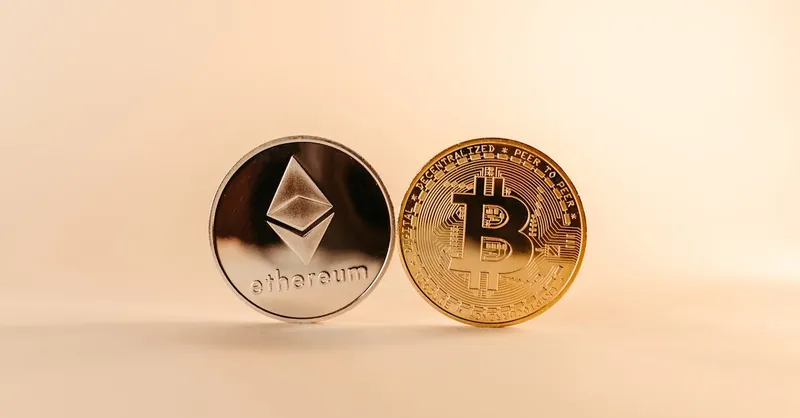
Image courtesy of Jonathan Borba
Terra Classic (LUNC) and Terra 2.0 (LUNA) – Rebuilding and Potential Resurgence
The Terra ecosystem, once hailed as a revolutionary force in stablecoins and DeFi, faced a dramatic upheaval in 2022 with the collapse of its algorithmic stablecoin UST, leading to a significant market crash for Terra's native token, LUNA. In response, the community and developers initiated a bold recovery plan that resulted in the bifurcation into Terra Classic (LUNC) and the newly launched Terra 2.0 (LUNA). This transformation represents not only a chance for redemption but also an intriguing speculative opportunity within the altcoin space.
From Collapse to Rebirth: The Terra Story
-
Terra Classic (LUNC):
The original chain, now called Terra Classic, continues to operate under the stewardship of a loyal community focused on restoring value, improving tokenomics, and fostering decentralized finance innovations on the legacy blockchain. Efforts such as token burns, community-driven proposals, and improvements in governance signal a commitment to stability and gradual resurgence. -
Terra 2.0 (LUNA):
Launched as a fresh blockchain devoid of the algorithmic stablecoin model, Terra 2.0 aims to rebuild trust and attract developers by emphasizing speed, scalability, and robust smart contract capabilities. The new LUNA token serves as the network’s native asset, with plans for ecosystem grants, infrastructural enhancements, and partnerships that could drive adoption.
Speculative Potential and Investment Considerations
-
Rebuilding Community Trust: Both Terra Classic and Terra 2.0 focus heavily on community governance and decentralized development to regain investor confidence, a crucial driver for long-term viability.
-
Evolving Use Cases: Terra 2.0 targets a diversified DeFi and dApp ecosystem, moving beyond prior dependence on algorithmic stablecoins. This technological pivot may unlock new avenues for growth and adoption.
-
Market Sentiment and Volatility: Given the history, LUNC and LUNA remain highly speculative assets. Their performance depends on successful execution of recovery plans, ecosystem expansion, and broader crypto market conditions.
In summary, the Terra project’s transformation through Terra Classic and Terra 2.0 encapsulates a compelling narrative of resilience and innovation. For traders and investors willing to navigate the risks, these tokens offer a unique chance to participate in a high-growth potential altcoin rebirth aligned with cutting-edge blockchain development and expanding DeFi applications.
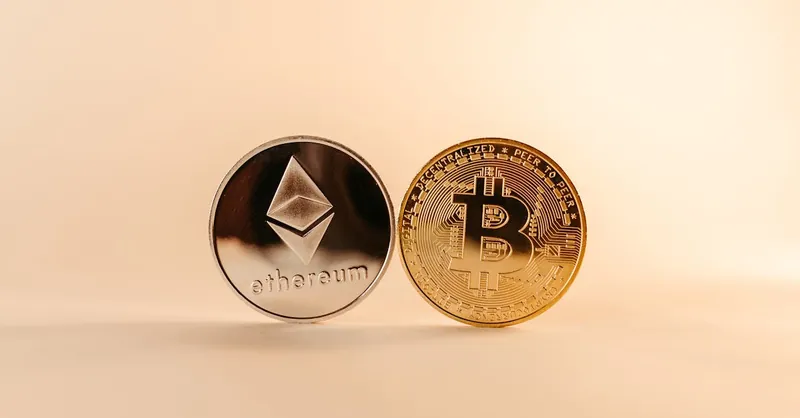
Image courtesy of Jonathan Borba
Emerging Altcoins to Watch in 2024 – Promising Newcomers with Innovative Use Cases
As the cryptocurrency landscape continually evolves, 2024 is shaping up to be a pivotal year for several emerging altcoins that bring fresh innovation, unique utility, and strong early momentum. These newcomers are disrupting traditional blockchain paradigms by addressing unmet needs in areas such as decentralized identity, Web3 integration, privacy, and cross-chain interoperability. Although still early-stage, these altcoins have demonstrated promising technological advancements and growing community interest—making them compelling projects to watch for investors seeking outsized growth potential in the coming year.
Top Emerging Altcoins with High Growth Potential
-
Aptos (APT)
Aptos is gaining rapid attention as a next-generation Layer-1 blockchain focused on delivering high throughput and low-latency finality through its novel parallel execution engine. Built by former Meta engineers, Aptos emphasizes scalability and safety for mass adoption of Web3 applications, staking a strong claim as a competitor to Ethereum and Solana. -
Sui (SUI)
Sui combines smart contract innovation with Move programming language, enabling highly efficient asset management and execution. With a focus on user experience and low latency, Sui targets gaming, social apps, and NFT-heavy ecosystems—areas ripe for blockchain transformation. -
Scroll
Scroll is an emerging zero-knowledge rollup (zk-rollup) scaling solution designed to enable Ethereum-compatible smart contracts with enhanced privacy and scalability. By leveraging zk-SNARK proofs, Scroll promises secure, cost-effective transactions poised to accelerate Ethereum layer-2 adoption and DeFi expansion. -
Sei Network (SEI)
Sei Network is a purpose-built Layer-1 blockchain optimized for decentralized exchange (DEX) performance with fast finality and high throughput. Its innovative order matching engine and front-running resistant mechanisms make it a standout for DeFi traders and developers focusing on liquidity and efficient markets.
These emerging altcoins share common growth drivers critical in 2024’s competitive crypto market:
- Innovative Technology: They leverage advanced consensus mechanisms, unique programming languages, or zero-knowledge proofs to solve key blockchain scaling and usability issues.
- Strong Developer Backing: Many are founded and supported by teams with deep experience in leading tech firms and blockchain research institutes, fostering credibility and rapid iteration.
- Niche Use Cases with Mass Appeal: By focusing on sectors like Web3 social platforms, gaming, privacy tech, or decentralized finance, these altcoins target growing areas with broad user demand.
- Growing Communities and Ecosystem Support: Early adopter communities and strategic partnerships are fueling ecosystem growth, leading to increased liquidity and visibility.
While these projects carry higher risk due to their relative novelty, their combination of technical innovation, practical use cases, and burgeoning ecosystems positions them as top altcoins to watch for outsized returns in 2024. Keeping a close eye on these emerging players allows investors to discover fresh opportunities before mainstream market recognition, aligning with a forward-thinking, diversified crypto investment approach.
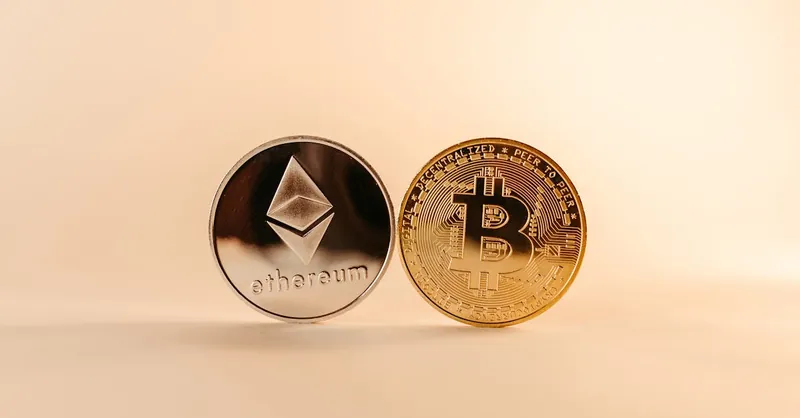
Image courtesy of Jonathan Borba
Risks and Considerations When Investing in High-Growth Altcoins
While the potential for explosive gains makes high-growth altcoins incredibly attractive, it’s crucial to approach these investments with a clear understanding of the risks and challenges inherent to the crypto market. Unlike more established assets, altcoins—especially emerging projects—often exhibit extreme volatility, regulatory uncertainty, and liquidity fluctuations that can significantly impact your portfolio. To maximize your chances of success, be mindful of the following risks and implement effective strategies for risk management.
Key Risks in High-Growth Altcoin Investing
-
Volatility and Price Swings
Altcoins can experience dramatic price fluctuations within short timeframes, driven by market sentiment, speculative trading, or news events. While this volatility creates opportunity, it also carries the risk of substantial losses, especially for illiquid or low-cap tokens where price manipulation is more common. -
Regulatory and Legal Uncertainty
The rapidly evolving regulatory landscape for cryptocurrencies poses significant risk. Governments worldwide are still defining rules for altcoins, including classification as securities, taxation, and compliance requirements. Unexpected regulatory announcements or crackdowns can trigger sharp price declines or project shutdowns, underscoring the importance of staying informed about jurisdictional developments. -
Project Viability and Team Reliability
Many altcoin projects are in early or experimental stages. Risks include technical failures, unmet development milestones, leadership changes, or governance disputes. Evaluating the transparency, track record, and community sentiment around a project helps mitigate these risks but cannot eliminate them completely. -
Security and Smart Contract Vulnerabilities
Code defects or vulnerabilities in smart contracts can lead to hacks, exploits, or permanent loss of funds. Altcoins without stringent security audits or bug bounty programs often carry elevated risks, especially in the DeFi sector.
Strategies to Manage Risk Effectively
- Diversify Your Altcoin Portfolio: Avoid concentrating your holdings in a single asset; instead, spread investments across different projects with varied use cases and risk profiles to reduce exposure to any one failure.
- Perform Thorough Due Diligence: Continuously research technological fundamentals, team credibility, tokenomics, and community engagement before investing or adding to positions.
- Set Realistic Expectations and Use Stop-Losses: Define clear entry and exit points based on risk tolerance and market trends to protect capital from sudden downturns.
- Stay Updated on Regulatory News: Monitor developments in crypto regulation in your country and globally, adapting your investment strategy accordingly.
- Consider Position Sizing Carefully: Allocate only a portion of your portfolio to high-risk altcoins, balancing with more stable crypto assets like Bitcoin or blue-chip projects.
By acknowledging and preparing for these risks, investors can better navigate the unpredictable terrain of high-growth altcoins, optimizing their chances of not only capturing upside potential but also safeguarding assets against downside volatility. Balancing enthusiasm for innovative projects with a disciplined, informed approach is essential for sustainable success in the dynamic crypto market of 2024.
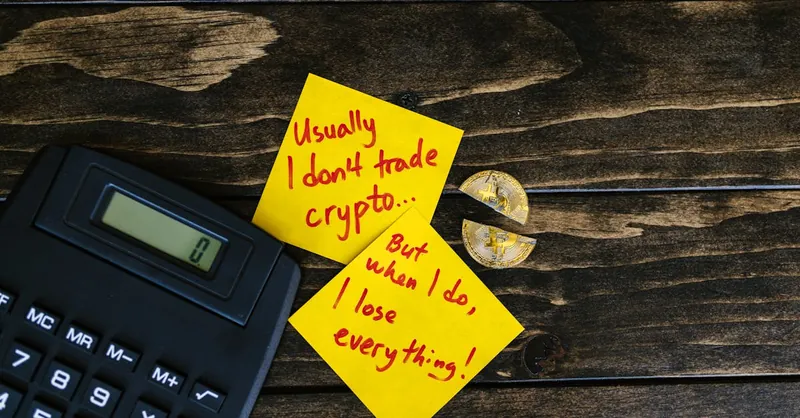
Image courtesy of RDNE Stock project
